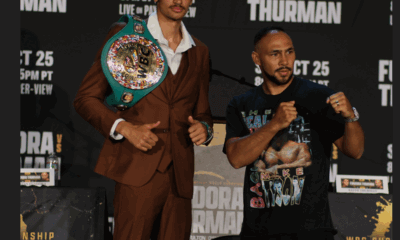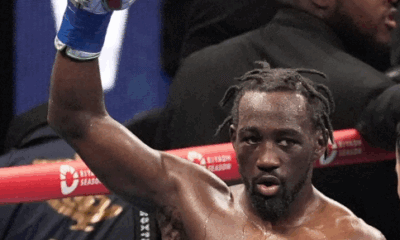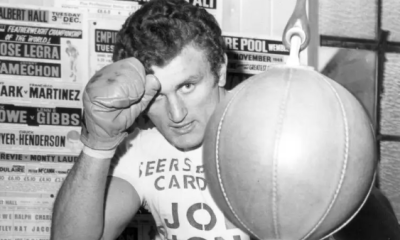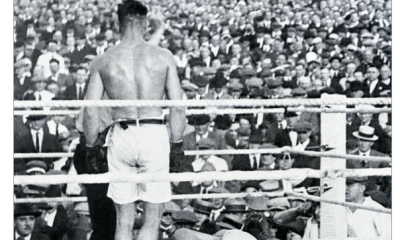Featured Articles
The Top Ten Light-Heavyweights of the Decade 2010-2019
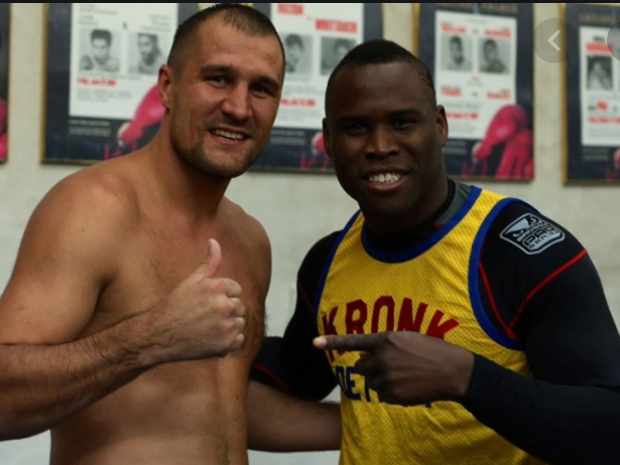
The light-heavyweight decade just passed was neither as impressive as cruiserweight nor as underwhelming as heavyweight when placed under the microscope; most notable was the emergence of no fewer than six lineal champions, an impressive number that will not be bettered and might tell any one of a hundred stories depending on who is writing it.
I welcome you to my telling.
10 – Oleksandr Gvozdyk
Peak Ranking: Ch. Record for the Decade: 17-1 Ranked For: 10% of the Decade
Tavoris Cloud came close to grabbing the number ten spot, but his second most impressive win after his 2010 defeat of Glen Johnson is his points decision over Gabriel Campillo from 2012. This, sadly, is a straight-up robbery despite Campillo suffering a disastrous first round. It’s a very good fight though, and if you have the time, check it out. I did actually look at Campillo then, because despite the fact he has lost many of his keynote contests, he was repeatedly abused on the cards, against Cloud, against Beibut Shumenov and in the draw with Karo Murat, but there isn’t quite enough there to make the ten. I looked briefly at Andrzej Fonfara, who did as much to eliminate Campillo from contention as any other fighter but despite all the right names, Fonfara tended to meet them on all the wrong dates, when they were well past prime.
So, I went back to the future and have named as the #10 light-heavyweight for the decade the last lineal champion but one, Oleksandr Gvozdyk. Gvozdyk inflicted terrible injuries on the long-reigning champion Adonis Stevenson and so it seems ghoulish to dwell upon how they were dealt, but the big clue came in the third round when Stevenson was dropped hard. He was nimble, quick-handed and already had a nice line in feints with glove and boot. He essentially outlasted a much more seasoned fighter to take the stoppage victory in eleven.
He managed just a single defense before an even more deadly Artur Beterbiev caught up with him, but I think he did just enough on his run to the Stevenson fight to get the nod, picking off the likes of Tommy Karpency and Isaac Chilemba as early as ninth and tenth fights.
09 – Chad Dawson
Peak Ranking: Ch. Record for the Decade: 7-5-0-1 Ranked For: 45% of the Decade
Chad Dawson’s run from 2006 to 2009 was legitimately special but was brought to a juddering halt by Jean Pascal in the summer of 2010. Dawson was a preeminent light-heavyweight of the time but the last decade was not kind to him, as reflected in his paper record. So, the question isn’t whether he should rank any higher here, but whether he should rank at all.
I’ve come down on the side of “yes” due to just three fights and in essence just one. Dawson bounced back from Pascal with a very impressive win over Adrian Diaconu who had his own problems with Pascal but remained a ranked contender and a well-organized, doughty opponent. Dawson outboxed him cleanly over twelve in his first fight with Emmanuel Steward in his corner and from here moved on to a contest with true champion Bernard Hopkins.
Hopkins, ancient and brilliant, suffered a separation of his left shoulder and the fight was abandoned, originally awarded to Dawson, later rendered a no-contest making a rematch a necessity. Dawson, whose style had elements of the cutie, turned stalker for Diaconu and it was a style he re-embraced for his contests with Hopkins. Working behind a jab, his superior speed and an occasional flurry brought him what should have been a clear points win despite the majority decision the judges found.
As unsatisfying as these fights were, they represent a summit in that Dawson became the true light-heavyweight champion of the world. When he lost it in a disastrous first round knockout loss to the decade’s defining champion, Adonis Stevenson, it spelled the end for him as a top contender. He has continued to box but has yet to earn another meaningful victory at the poundage, a harsh indictment of his late career.
The early career sneaks him in at number nine.
08 – Jean Pascal
Peak Ranking: Ch. Record for the Decade: 10-5-1-1 Ranked For: 68% of the Decade
It feels very much as though Jean Pascal has been around forever and certainly his longevity is reflected in the touchstone fighters he has met across the decade. How many men faced both Hopkins and Dawson and Bivol and Elieder Alvarez?
Despite this, Pascal has failed to nail up the kind of scalps that might be expected from so many years spent on the dangerous side of the street. He lost to all of the above, bar one, and his second-best result is arguably his last – a twelve round split over #8 contender Badou Jack scored in dying days of a decade he once ruled over. Their fight was a lo-fi classic, all tension and surges, first one way, then the other and the cards reflected this, Pascal’s sudden spurts of activity and jab (excellent when he used it) enough to get him across the line in a split decision. It was a rough, difficult, contest and not the type of fight a veteran tends to win.
In the fight immediately prior to this came another surprising and exciting victory, this time over the much younger Marcus Browne. In many ways this was the ultimate old-man mugging, as Pascal lost every round – except the ones that mattered. Buying himself three points on the cards by way of knockdowns, Pascal turned a sure defeat into a sure victory as he was out-sped, out-hit but not-out-thought or outpointed. He won by way of technical decision over eight rounds and by a single point after an accidental headbutt opened a gusher on Browne’s forehead.
So, Pascal finalized his case with mere hours of the decade remaining, but it was a victory that he earned when it was only months old that cements his place. In August of 2010 another accidental headbutt resulted in another technical decision in the favor of Pascal, this time after eleven, the victim, Chad Dawson. That made Pascal the lineal champion.
07 – Eleider Alvarez
Peak Ranking: 1 Record for the Decade: 21-1 Ranked For: 52% of the Decade
Eleider Alvarez is the most underrated fighter on this list, and although I don’t feel great about him slipping in ahead of Jean Pascal, it helps that Alverez defeated him.
Pascal, as it happened, had several special nights before him, but at the time it felt like Alvarez was clearing up on the last generation as Isaac Chilemba (then still ranked, a part of so many of these stories), Lucian Bute and Pascal all fell to him. The Chilemba fight was dull and close, the Pascal fight a jab clinic with Alvarez in control, however the judges scored it, but it was against Bute that Alvarez showed what might be possible. Bute was the mere remains of the fighter that had impressed years previously, but Alvarez dazzled with his speed and heavy-handedness, thrashing him in five.
A Colombian by birth, Alvarez fights out of fistic hotspot Montreal but went in the summer of 2018 to the United States to face Sergey Kovalev. Kovalev’s air of invincibility had been crushed forever by Andre Ward, but he had re-established himself as the number one contender to the legitimate title when Eleider came calling. The Columbian, in truth, was marginally outboxed through the first six rounds but Kovalev never appeared entirely comfortable while stalking his man. In the seventh, behind on the cards and with the fight ebbing away, Alvarez followed up a swift feinted jab with a booming right hand over the top that set Kovalev on his trunks; his follow-up was sensational and saw him a winner on the three-knockdown rule.
Alvarez was out-classed by a jab-right hand strategy in the rematch, and that puts the brakes on his standing here. He remains, at thirty-five, a serious player in the division.
06 – Dmitry Bivol
Peak Ranking: 1 Record for the Decade: 17-0 Ranked For: 25% of the Decade
Dmitry Bivol is currently ranked the world’s #1 contender to Artur Beterbiev’s championship and joyfully, that fight will likely be made for 2020. In 2018 and 2019, Bivol cleared out several fighters belonging to the last generation and picked off two live contenders from this one, and it’s enough to see him ensconced in the decade’s divisional top ten.
Bivol impressed in bombing out Cedric Agnew and Trent Broadhurst in 2017 but his first fight of 2018, against Sullivan Barrera, was when he was confirmed top tier. Barrera was highly ranked, a puncher, and tough. Bivol won every minute of every round and stopped him in the twelfth. No light-heavyweight was ever so assured after so few fights. The footwork was quick and sure. His jab was so good it stripped Barrera almost entirely of his own jab, and he went literal clusters of rounds without landing one. The right hand behind is as fast as any in boxing despite his size and the body-attack is deployed as a part of a layered offense, strategic, opportunistic. Bivol has the depth in offense of a much, much more experienced man.
Once more pitted against generational leftovers behind this win, Bivol completely dominated the scorecards against Isaac Chilemba and Jean Pascal. These were fighters on the slide but what was impressive was that Bivol was at no point out-thought by either. His defensive surety and offensive riffing meant that both men failed to find tactical cracks in Bivol’s boxing armor despite whatever fleeting successes they achieved.
When he turned in similarly one-sided cards against the fresher, hungrier Joe Smith, Bivol’s completeness was signaled. He has been imperious and dominant against a wide range of quality opposition in a short timeframe.
05 – Bernard Hopkins
Peak Ranking: Ch. Record for the Decade: 5-3-1-1 Ranked For: 46% of the Decade
If you remember 2010-2019 the same way I do, you remember Bernard Hopkins beating up an ancient Roy Jones and thinking “that makes sense, now he’ll retire.”
He didn’t retire and in fact he had some of the most thrilling fights of his career – yes thrilling – before him. Chief among these was his December 2010 battle with Jean Pascal. Pascal, by then lineal champion, dropped Hopkins twice in the contest but was so summarily outboxed that many believed he was lucky to escape with the draw. An immediate rematch was fought.
This fight had George Foreman, whose record as the oldest champion in boxing history was about to be supplanted, “on the edge of his seat” with excitement, a response to the tension that purveyed each round. Emanuel Steward called it “the best fight” Hopkins had boxed since his knockout of Felix Trinidad. It was an astonishing display and a unanimous points victory over a prime, young, hungry champion boxing in his hometown. Hopkins was under heavy pressure early but leading with the right hand placed a clearly uncertain Pascal back in his box. He sniffed the decision out by a point on my card.
Hopkins was not always so much fun at light-heavyweight and when he ran into Chad Dawson in his next two fights (a no contest and a loss) the fun seemed to be over; but writing Hopkins off is foolish. He came back and out-smarted Tavoris Cloud, then the #2 contender in the world, punishing him for every little mistake, scraping up enough points for a clear decision. He was by then forty-eight years old. Karo Murat and Beibut Shumenov fared little better – Shumenov even became the first Hopkins opponent to visit the canvas in a decade; then the wheels came off a little with a wide loss to Sergey Kovalev before he was knocked clean out of the ring and the sport by Joe Smith.
But he will never be forgotten. During a decade of life when most men are looking to wind down, Hopkins wound up and he wound up a big chunk of the light-heavyweight division.
04 – Andre Ward
Peak Ranking: 1 Record for the Decade: 11-0 Ranked For: 14% of the Decade
I had no clue what to do with Andre Ward when I realized I had to rank him. 11-0 for the decade, sure, but less than that at 175lbs where he hovers at around half a dozen contests. It’s not a great deal.
But the more I thought about it the less troubling it seemed. Sure, he didn’t spend a lot of time in the division, but his numerical record is a site better than that of Chad Dawson, as is his paper one. The reason is his two duels with Sergey Kovalev.
The first, fought in late 2016, ached with tension. Kovalev dominated the first two rounds and even dumped Ward on the end of a one-two in the second but the American’s adaptability is his great strength. His original plan was to scavenge punches while taking as little risk as possible but Kovalev saw straight through that and sought to dominate him behind the jab. In the third, Ward spent some time taking chances, nothing radical, but enough to make Kovalev think about his speed. In the sixth he pot-shot the body; he wrestled, he out-hit Kovalev in ugly clinches in a desperately close fight.
And that’s the key here. Ward identified early that he was outgunned and mashed a whole series of small adaptations into a strategic quilt that he used it to make the fight close. I had Kovalev winning by a point, but his success was as much making it reasonable for him to have won as in winning. It was a tortuous fight to score.
Most media favored Kovalev making a rematch inevitable. Famously, or infamously, Ward landed significant low blows in this fight, in the second, when he appeared to be losing control, the seventh, and the eighth, where punches deemed either borderline or low depending on your perspective resulted in a stoppage win for Ward.
What to make of all this? A desperately close first fight that could be scored any one of three ways, a controversial stoppage in the second? In the end, I honor those results. I won’t overturn the decision in such a close fight for ranking purposes and a stoppage is a stoppage. This means Ward has the best and second-best wins on this list. It’s the top five for him!
03 – Artur Beterbiev
Peak Ranking: Ch. Record for the Decade: 15-0 Ranked For: 50% of the Decade
Current champion Artur Beterbiev spent longer in the decadal rankings than the likes of Bernard Hopkins and Chad Dawson, all while competing in just fifteen professional fights. He achieved this by being matched tough but brilliantly early. In just his sixth fight he met Tavoris Cloud, who had lost back to back against Bernard Hopkins and Adonis Stevenson but remained ranked at #7 and was a sure challenge for a green professional, albeit one who had rated a crack amateur.
Beterbiev blew through Cloud in two rounds, already boxing like an AI/human hybrid, his control of ring center absolute, his variety and technical surety on offense outstanding. Probably there is no “correct” way to box, but for the four short minutes this fight lasted that seemed arguable. Inside, outside, offense, defense, against a world-class opponent on the slide, Beterbiev was devastating.
A few months later Beterbiev, still nothing but a baby in professional terms, took on Gabriel Campillo, the big, awkward light-heavyweight who was robbed against Cloud three years before. This was a different type of challenge: one that was mobile, quick, a slippery boxer with a nice line in unorthodox offense. Beterbiev found him in just four, with shorter, harder punches than Cloud was able to land on Campillo in twelve.
Beterbiev is a wrecking-machine, a new incarnation of the east European technician, a Russian raised on boxing who studied at a Sports School from the age of sixteen. His title-winning performance against Gvozdyk was seminal, wearing him out, out-landing and finally bullying him to the canvas, echoing their meeting in the amateurs. He is going to take some beating, though at thirty-five years of age this exquisite form surely can’t last much longer.
02 – Adonis Stevenson
Peak Ranking: Ch. Record for the Decade: 16-2-1 Ranked For: 56% of the Decade
When Adonis Stevenson separated Chad Dawson from his senses in the first minute of their 2013 championship contest he became, for around half that time, everyone’s favorite fighter. The grotesque over-celebration in Dawson’s stunned face, followed by nine title defenses during which the highest ranked opponent he met was Andrzej Fonfara (5), made him rather less popular.
The truth of those defenses is inescapable, however. While Stevenson may not have shown much interest in meeting the best in the division once he’d easily dispatched the champion, he did dispatch the champion, and he did stage the defenses. Years of ranking fighters has taught me that they should be ranked in accordance with what they did do, rather than what they did not. Stevenson’s title reign made him the definitive champion for the decade and the opposition he did meet saw him build the number two light-heavyweight resume for that timeframe.
It is constructed in part of men who are on this list (Dawson, Cloud) and men who were considered for it at some stage (Fonfara, Karpency). As a puncher, he’s arguably unequalled even in this company and remains undervalued as a boxer. His reign came to a tragic end when Gvozdyk repeatedly found and hurt him in their 2018 contest, hospitalizing him and injuring him seriously. That he was recovered enough in October to attend the WBC convention and take the stage under his own steam is testimony enough to his fighter’s heart and was a fitting end to the light-heavyweight decade.
01 – Sergey Kovalev
Peak Ranking: 1 Record for the Decade: 29-4-1 Ranked For: 84% of the Decade
I remember Sergey Kovalev’s 2013 arrival in the UK very well. He was here to take on Nathan Cleverly, who due to his holding a mathematics degree and having the word “clever” in his name was repeatedly lauded for his “ring IQ” by the British press, who also made him a favorite. In fact, he was about to be hopelessly outgunned by a fighter who may look like a mere prototype for Bivol or Beterbiev right now, but who in his day was every bit as intimidating as either of those men.
Kovalev landed in England having brutalized Campillo earlier that year; he didn’t rank with the truly elite combination artists of the decade, but he had a two-piece and a three-piece as good as literally anyone boxing, and he laid it out for Campillo that night. The Spaniard was gone in three rounds. Cleverly would get as far as the fourth.
All of this made Kovalev a strapholder, something he would remain for much of the rest of the decade, but he would never become the true world champion. That title was held by Adonis Stevenson and Stevenson wanted no part of Kovalev. As a writer who upholds the “tradition” (dubious, as there were conflicting claims in every era) of one division, one champion, this requires some explaining: if Stevenson managed nine defenses of the legitimate world title, how can Kovalev be justified as ranking above him?
True championship status is indeed a heavy indicator of pre-eminence, but it is far from definitive. The reasoning for Kovalev’s standing as the finest light-heavyweight of the decade is simple: he defeated more ranked contenders; he defeated more top five contenders; he defeated the number one ranked contender on two separate occasions; he sat atop the division for longer; he looked a better fighter.
The last of these points is disputable, the rest is not. It was clear when Kovalev embarrassed the ageing Hopkins that he was not just dangerous, but special; twice stopping Jean Pascal, who had never even been down before his first contest with Kovalev, rendered him terrifying. Even after he was toppled by Ward and then, later, by Eleider Alvarez, he returned to the top of the rankings. Now, in 2020, years after his savage prime ended, Kovalev remains ranked among the new generations of former Soviet-bloc light-heavyweights, even the embarrassing loss to middleweight Saul Alvarez not enough to flush him out of the top five.
The decade captured both the worst and the best of Kovalev and that makes appraising his reign complex. What makes him the clear number one is the timing that emerged around him. Clearly the best of the first decadal generation, emerging talent didn’t have time to build a conquering resume.
First by default is still first; nobody came close to overhauling him.
Check out more boxing news on video at The Boxing Channel
To comment on this story in The Fight Forum CLICK HERE
-
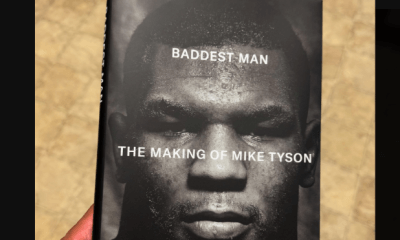
 Book Review4 weeks ago
Book Review4 weeks agoMark Kriegel’s New Book About Mike Tyson is a Must-Read
-
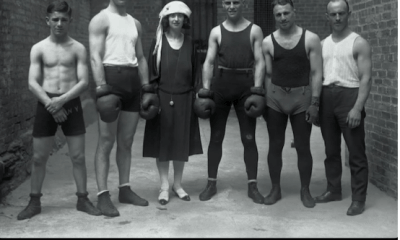
 Featured Articles3 weeks ago
Featured Articles3 weeks agoThe Hauser Report: Debunking Two Myths and Other Notes
-
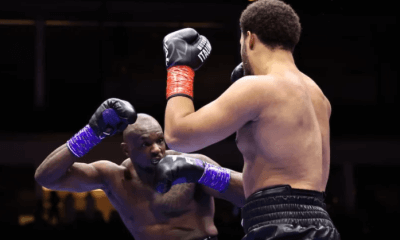
 Featured Articles3 weeks ago
Featured Articles3 weeks agoMoses Itauma Continues his Rapid Rise; Steamrolls Dillian Whyte in Riyadh
-
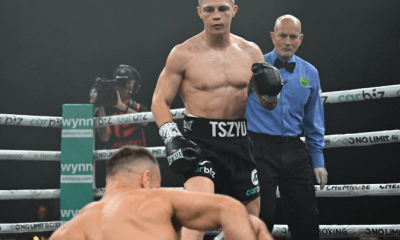
 Featured Articles3 weeks ago
Featured Articles3 weeks agoNikita Tszyu and Australia’s Short-Lived Boxing Renaissance
-
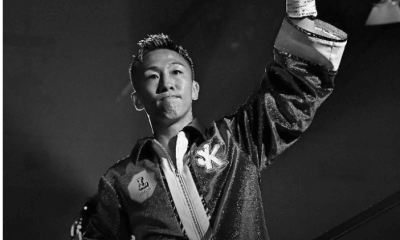
 Featured Articles4 weeks ago
Featured Articles4 weeks agoKotari and Urakawa – Two Fatalities on the Same Card in Japan: Boxing’s Darkest Day
-
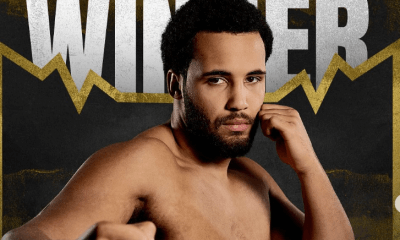
 Featured Articles3 weeks ago
Featured Articles3 weeks agoIs Moses Itauma the Next Mike Tyson?
-

 Featured Articles2 weeks ago
Featured Articles2 weeks agoBoxing Odds and Ends: Paul vs ‘Tank,’ Big Trouble for Marselles Brown and More
-

 Featured Articles2 weeks ago
Featured Articles2 weeks agoAvila Perspective, Chap. 340: MVP in Orlando This Weekend


